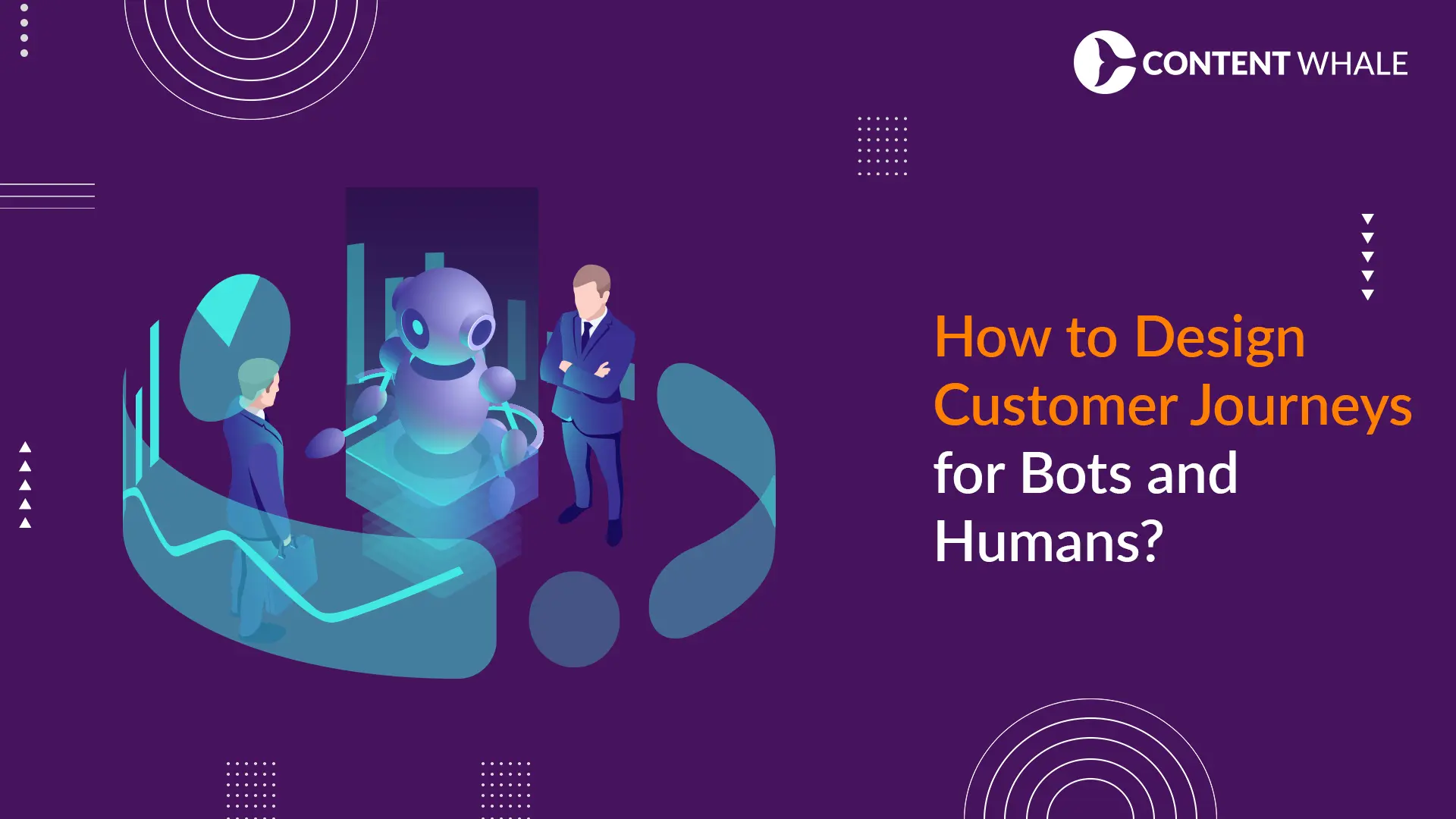Semantic and sentiment annotation are two key processes that make natural language processing (NLP) smarter and more efficient. These techniques help machines understand the meaning behind the words and identify emotions or opinions expressed in the text. As businesses increasingly rely on NLP applications like virtual assistants, chatbots, and feedback analysis systems, the accuracy of annotation becomes essential for improving machine learning models.
In various industries, from e-commerce to healthcare, companies are integrating text annotation in NLP to enhance customer interactions and derive insights from vast datasets.
By using techniques like semantic annotation and sentiment tagging, machines can now recognize entities such as names, places, and dates, while also analyzing whether the tone of a message is positive, negative, or neutral. Accurate data annotation for NLP ensures that models perform better, making tools like chatbots more intuitive and reliable.
These advancements are fueling the rapid growth of NLP applications, with companies seeking ways to improve their AI systems through smarter annotation techniques. Understanding how semantic and sentiment annotation works is the first step toward building more effective NLP models that accurately process and respond to human language.
1. What is Semantic Annotation?
Semantic annotation adds layers of meaning to unstructured data, making it easier for machines to understand the context of a text. When we annotate a text semantically, we label important entities like people, locations, and organizations. These labels allow machines to identify and categorize information, enriching the dataset with valuable insights.
A) How It Works:
- Entity Recognition: Semantic annotation begins by identifying entities in a text, such as names of people, places, or organizations. For instance, in the sentence “John visited Paris,” the system tags “John” as a person and “Paris” as a location.
- Contextual Meaning: Beyond simply identifying words, semantic annotation assigns context, helping machines understand how a word or phrase functions in a sentence. This process helps distinguish between meanings, such as “Apple” as a fruit versus “Apple” as a tech company.
- Semantic Labels: Labels applied through semantic annotation are crucial for NLP applications, such as chatbots or virtual assistants. For example, tagging a word as a date or location enables these applications to provide more accurate responses.
B) Importance of Semantic Annotation:
- Improved Data Understanding: Machines can interpret text more meaningfully by attaching labels that define the relationships between different entities.
- Enhanced Model Training: The richer the annotated dataset, the more accurate the natural language processing models become.
- Application in AI Systems: Many NLP applications use semantic annotation to handle tasks like text annotation in NLP, entity annotation, and data labeling for machine learning algorithms.
C) Examples of Semantic Labels:
- Person: “Elon Musk”
- Location: “New York City”
- Organization: “Tesla”
Table: Semantic Annotation Tags and Examples
| # | Tool Name | Annotation Type | Key Features |
| 1 | Label Studio | Semantic & Sentiment | Open-source, supports multiple data types, active learning, customizable interface |
| 2 | Prodigy | Semantic | Active learning, machine learning integration, multi-label annotation |
| 3 | MonkeyLearn | Sentiment | No-code platform, real-time sentiment analysis, customizable models |
| 4 | Amazon Comprehend | Semantic & Sentiment | Fully managed service, key phrase detection, sentiment analysis, entity recognition |
| 5 | Appen | Sentiment | Scalable solutions for large datasets, human-in-the-loop services, sentiment automation |
2. What is Sentiment Annotation?
Sentiment annotation involves labeling text data according to the emotions or opinions expressed within it. By categorizing sentences or phrases as positive, negative, or neutral, sentiment analysis annotation helps machines interpret emotional context, allowing for more nuanced insights. This process is essential for understanding how users feel about products, services, or experiences.
A) How It Works:
- Identifying Sentiment: In sentiment annotation, each piece of text is analyzed to determine its emotional tone. For example, the sentence, “I love this product!” would be tagged as positive, while “This service is terrible” would be labeled as negative.
- Sentiment Labels: The most basic forms of sentiment annotation include positive, negative, and neutral tags. However, more advanced systems can incorporate deeper emotional analysis, identifying emotions such as joy, anger, or frustration. This helps enhance emotional analysis in tasks like customer feedback evaluation.
- Sentiment Polarity: Sentiment annotation often measures the polarity of opinions. Sentiment polarity indicates the degree to which a sentiment leans positive or negative. For instance, “This is the best purchase I’ve ever made” has stronger positive polarity compared to “This product is decent.”
B) Importance of Sentiment Annotation:
- Understanding Customer Sentiment: Businesses can gauge public opinion on their products or services by using sentiment tagging to monitor social media, reviews, or survey responses.
- Enhanced Decision-Making: Accurate sentiment annotation allows companies to make data-driven decisions based on customer emotions. For instance, companies can quickly identify negative trends and address concerns to improve customer satisfaction.
- Improving NLP Models: Sentiment annotation plays a key role in training models for sentiment analysis. These models are widely used in NLP applications such as chatbots, review analysis, and social media monitoring.
C) Examples of Sentiment Annotation:
- Positive Sentiment: “This product works perfectly!”
- Negative Sentiment: “I am disappointed with the service.”
- Neutral Sentiment: “The delivery was on time.”
3. Differences Between Semantic and Sentiment Annotation

While both semantic and sentiment annotation are integral to improving natural language processing (NLP) models, they serve different purposes in helping machines interpret human language. Let’s break down the distinctions and understand when to use each type of annotation.
Key Distinctions:
A) Focus Area:
- Semantic Annotation: Focuses on the meaning of the text by identifying entities such as people, places, dates, or organizations. It enriches data by giving it context and helping models understand the relationships between different elements in a sentence.
- Sentiment Annotation: Focuses on the emotional tone or opinion expressed in the text. The goal is to categorize text as positive, negative, or neutral, and sometimes to identify more complex emotions such as joy, frustration, or anger.
B) Use Cases:
- Semantic Annotation: Primarily used for tasks such as entity annotation, text annotation in NLP, and enhancing NLP applications like chatbots and virtual assistants. It’s essential for tasks like named entity recognition (NER) and machine translation, where the meaning of the text is critical.
- Sentiment Annotation: Plays a pivotal role in sentiment analysis annotation, where understanding customer feedback, product reviews, or social media sentiment is important. It helps identify user opinions and feelings toward a brand or service.
C) Output:
- Semantic Annotation: Outputs structured data with labeled entities, improving the model’s ability to understand and process text. For example, in the sentence “Apple launched its new iPhone,” semantic annotation would label “Apple” as an organization and “iPhone” as a product.
- Sentiment Annotation: Outputs labeled sentiment tags like positive, negative, or neutral, giving insight into the overall tone of the text. For example, the sentence “I’m excited about the new iPhone!” would be tagged as positive sentiment with a high sentiment polarity.
E) When to Use Each:
- Use Semantic Annotation when you need machines to recognize and differentiate between entities and provide a structured understanding of the data. It’s vital for applications where meaning, classification, and context are essential, such as virtual assistants and content recommendation systems.
- Use Sentiment Annotation when you’re looking to gauge the emotional tone behind user feedback, social media comments, or product reviews. It’s ideal for monitoring brand reputation, understanding customer opinions, and performing emotional analysis on large datasets.
Why Both are Important for NLP Models:
Combining semantic annotation and sentiment tagging makes NLP models more robust. Semantic annotation allows models to process and understand context, while sentiment annotation adds a layer of emotional intelligence. Together, they enable more accurate text classification, personalized customer experiences, and refined search engine results.
4. Use Cases of Semantic and Sentiment Annotation in NLP
Semantic and sentiment annotation have become fundamental in driving advancements in natural language processing (NLP) across multiple industries. Whether it’s improving customer experiences, enhancing digital assistants, or streamlining internal operations, these annotation techniques enable machines to better understand both the meaning and the emotional tone behind human language.
A) Chatbots and Virtual Assistants
- Semantic Annotation: Virtual assistants like Siri or Alexa rely heavily on semantic annotation to understand and process user queries. For instance, when a user asks, “What’s the weather like in New York?”, semantic annotation helps the system recognize “New York” as a location and “weather” as the main subject, allowing it to respond appropriately.
- Sentiment Annotation: While chatbots typically focus on semantic understanding, sentiment analysis is becoming increasingly important. For example, customer service bots can use sentiment tagging to detect user frustration or satisfaction, enabling them to escalate complaints or provide additional support when necessary.
B) Customer Feedback and Social Media Monitoring
- Sentiment Annotation: One of the most widely used applications of sentiment analysis annotation is in tracking customer sentiment across platforms. Companies use sentiment annotation to analyze feedback from product reviews, customer surveys, and social media mentions. For instance, tagging comments like “This product is amazing!” as positive or “I’m extremely dissatisfied” as negative helps businesses gauge public opinion.
- Semantic Annotation: In social media monitoring, semantic annotation helps identify key topics, products, and people being discussed. It ensures that companies not only know how customers feel but also which specific products or services are generating these feelings. This kind of data annotation for NLP is critical for brand reputation management.
C) Content Categorization and Recommendation Systems
- Semantic Annotation: Streaming platforms like Netflix or music services like Spotify use semantic annotation to recommend content based on user preferences. By tagging shows, movies, or songs with specific genres, themes, or keywords, the system can suggest relevant content. For example, if a user enjoys action movies, the system will recognize and recommend similar content.
- Sentiment Annotation: In addition to semantic tagging, these platforms can utilize sentiment polarity to assess user reviews or ratings. By analyzing whether viewers are enjoying a particular show or genre, platforms can further personalize recommendations.
D) Named Entity Recognition (NER) in Healthcare
- Semantic Annotation: The healthcare sector benefits greatly from semantic annotation in tasks such as named entity recognition (NER). For example, when processing medical records, semantic annotation helps NLP models identify and classify patient names, medication types, and diagnosis dates. This structured labeling is essential for organizing and analyzing vast amounts of medical data.
E) Brand Sentiment Analysis
- Sentiment Annotation: Businesses often use sentiment analysis to assess how customers feel about their brand. This can involve analyzing social media posts, surveys, or review data. For example, a retail brand might use sentiment annotation to monitor customer reactions during a major sale event. This allows them to respond promptly to negative feedback and capitalize on positive sentiment.
F) Machine Translation and NLP Models
- Semantic and Sentiment Annotation: Machine translation systems, such as Google Translate, are constantly being refined using both semantic and sentiment annotation. By labeling entities and identifying the tone behind sentences, these systems can generate more accurate translations that maintain both the meaning and emotional intent of the original text.
5. Best Practices for Semantic Annotation
Accurate semantic annotation is essential for enhancing the performance of natural language processing (NLP) models. Following best practices ensures that your annotations are consistent, reliable, and useful for machine learning applications. Here’s how to achieve high-quality semantic annotation.
A) Create Consistency Across Large Datasets
Maintaining consistency is key when working with large-scale text annotation in NLP projects. Inconsistent labeling can introduce errors in model training and reduce accuracy. To ensure uniformity:
- Develop clear annotation guidelines with specific rules for tagging entities.
- Apply consistent tagging for similar entities (e.g., “Doctor” vs. “Dr.”).
- Regularly review and update guidelines as new edge cases or ambiguities arise.
B) Train Annotators Thoroughly
Human annotators play a crucial role in data annotation for NLP. A well-trained team ensures high-quality annotations, reducing errors. To achieve this:
- Provide comprehensive training sessions and guidelines.
- Conduct inter-annotator agreement (IAA) exercises to align understanding.
- Encourage annotators to document any ambiguous instances for further clarification.
C) Handle Ambiguous Entities Effectively
Ambiguity in text can lead to incorrect semantic annotation. Words like “Apple” may refer to both a fruit and a company. To resolve this:
- Use context clues within the text to disambiguate entities.
- Provide clear annotation instructions for dealing with ambiguous words.
- Incorporate co-referencing techniques to link related words within a document.
D) Leverage Annotation Tools
Using the right tools can significantly speed up and improve the accuracy of NLP text labeling. Some reliable tools include:
- Label Studio: An open-source platform with a customizable interface.
- Prodigy: An active learning tool that integrates with machine learning models.
- Amazon Comprehend: A cloud-based tool for automating semantic annotation.
These platforms help annotators manage large datasets and ensure that entities are labeled consistently.
E) Customize Annotation for Domain-Specific Data
Different industries require tailored annotation strategies. For example, legal documents, financial reports, and healthcare data each have unique terminology. Best practices include:
- Adapting annotation guidelines to fit the domain’s specific needs.
- Ensuring annotators are familiar with industry-specific terminology.
- Regularly updating the guidelines to capture new or evolving terms.
F) Implement Quality Control and Review Processes
Maintaining high-quality annotations requires a robust review process. Here’s how to ensure consistent quality:
- Set up a multi-tier review system where a senior annotator verifies the work of others.
- Regularly audit annotated data to catch errors before model training.
- Use feedback loops from your NLP models to identify common mistakes and adjust guidelines.
G) Iterate Based on Model Feedback
Annotation should be an iterative process. After training models with the annotated data:
- Continuously review the model’s performance to identify gaps in the annotation process.
- Update guidelines to handle edge cases or underrepresented entity types.
- Improve the semantic annotation process based on real-world model feedback.
6. Best Practices for Sentiment Annotation

Accurate sentiment annotation is crucial for improving the performance of sentiment analysis models in natural language processing (NLP). Properly identifying emotions and opinions in text helps create systems that can better interpret customer feedback, social media posts, and more. Here are some best practices for ensuring accurate and consistent sentiment tagging.
A) Focus on Context
Understanding the context in which words are used is vital for accurate sentiment annotation. Certain phrases may carry different meanings depending on the situation or surrounding text. For example, the phrase “That’s just great” can be sarcastic or genuinely positive depending on the context.
- Annotators should consider the full sentence or paragraph to capture the sentiment correctly.
- Encourage annotators to flag ambiguous sentences for further review to avoid misinterpretation.
B) Handle Complex Sentiments (Sarcasm, Irony, etc.)
Texts often contain complex sentiments, such as sarcasm or mixed emotions, which can be challenging to label correctly. To ensure accurate emotional analysis:
- Train annotators to recognize sarcasm, irony, and other subtle tones. For example, “Oh, wonderful, another traffic jam” would be tagged as negative, despite the seemingly positive words.
- Consider using multi-label annotation when dealing with complex texts where multiple emotions may be present, such as a mix of satisfaction and frustration.
C) Use Clear Sentiment Labels
Defining clear sentiment labels helps annotators maintain consistency across the dataset. The most commonly used sentiment labels are:
- Positive: Represents satisfaction, joy, or approval.
- Negative: Reflects frustration, anger, or dissatisfaction.
- Neutral: Indicates a lack of strong emotion or opinion.
For more advanced sentiment polarity, additional labels like “mixed” or “extremely positive/negative” can be included to capture nuances in the text.
D) Leverage Sentiment Annotation Tools
Using annotation tools can simplify the process, allowing for faster and more accurate labeling. Some popular tools for sentiment annotation include:
- MonkeyLearn: A no-code platform for quick sentiment analysis of texts.
- Appen: Offers scalable solutions for large-scale sentiment annotation projects.
- AWS Comprehend: Provides machine learning models that automate parts of the sentiment annotation process.
These tools help streamline workflows, particularly for large datasets, and can integrate with machine learning models for enhanced accuracy.
E) Regularly Review Annotated Data
Quality control is essential for any annotation project, particularly when dealing with subjective sentiments. Regular review ensures that annotations are consistent and correct. To achieve this:
- Implement a multi-level review process where senior annotators verify the work of others.
- Use inter-annotator agreement (IAA) to measure how consistent annotators are in labeling sentiment.
F) Address Bias in Sentiment Annotation
Cultural, social, and personal biases can affect how sentiment is perceived and labeled. To minimize bias:
- Provide thorough training for annotators to ensure they are aware of potential biases.
- Encourage a diverse group of annotators to review the data, ensuring that multiple perspectives are considered in the labeling process.
- Utilize machine learning tools that are designed to detect and reduce bias in sentiment tagging.
G) Adjust Based on Model Feedback
Once your sentiment analysis annotation is used to train an NLP model, you’ll need to continuously review the model’s performance. If the model struggles with specific cases, such as sarcasm or regional dialects, revisit and refine the annotation guidelines to address these challenges.
7. Challenges in Semantic and Sentiment Annotation
While semantic and sentiment annotation are powerful tools for enhancing natural language processing (NLP) models, several challenges can arise during the annotation process. These challenges often impact the accuracy of the labeled data and, in turn, the performance of the models. Below are some of the most common hurdles and how to address them.
A) Subjectivity in Sentiment Annotation
One of the primary challenges in sentiment analysis annotation is the subjective nature of human emotions. Different annotators may interpret the same text differently based on personal biases or cultural backgrounds. For instance, one person might view the phrase “That was fine” as neutral, while another might see it as mildly negative.
- Solution: To reduce subjectivity, it’s crucial to provide clear annotation guidelines. Define specific rules for tagging sentiments, such as what constitutes positive, negative, and neutral tones. Regular training and inter-annotator agreement (IAA) exercises can help ensure that different annotators interpret sentiments consistently.
B) Ambiguity in Semantic Annotation
Ambiguous entities are a common issue in semantic annotation. Words with multiple meanings, such as “bank” (which could refer to a financial institution or a riverbank), can create confusion during the annotation process. Without sufficient context, the annotator may label the entity incorrectly, leading to poor model performance.
- Solution: Annotators should always consider the broader context in which the word appears. Providing annotators with additional background information or using co-reference resolution techniques can help clarify ambiguous cases. For complex scenarios, tools that offer disambiguation support, such as entity linking systems, can also improve accuracy.
C) Complex Entities and Multi-Word Phrases
In semantic annotation, handling complex entities or multi-word phrases can be tricky. For example, in the phrase “United Nations,” both words together form a single entity, but individually, they have different meanings. If annotated incorrectly, this can mislead the model.
- Solution: Ensure that annotators are trained to recognize compound entities and phrases. Guidelines should provide examples of multi-word entities, and annotation tools should allow easy labeling of these phrases as a single entity.
D) Cultural and Contextual Differences in Sentiment Annotation
The meaning and tone of a sentence can vary widely across different cultures and contexts. For example, what is considered polite or neutral in one culture may come off as rude or negative in another. This variation can lead to inconsistent sentiment tagging, especially in global datasets.
- Solution: To minimize this issue, involve annotators from diverse backgrounds who understand the cultural context of the text being annotated. Additionally, sentiment polarity should be assessed carefully, especially in texts with a strong cultural influence. Providing annotators with context-specific examples can help reduce misinterpretation.
E) Bias in Sentiment Annotation
Bias can creep into sentiment tagging, particularly when annotators bring their own opinions and emotions into the annotation process. For example, an annotator may label a product review more positively or negatively based on their personal experience with the product, rather than the actual sentiment expressed in the text.
- Solution: Annotator bias can be mitigated through proper training and by incorporating automated tools that assist in the labeling process. Machine learning models trained on diverse datasets can help standardize sentiment annotation by detecting and reducing bias during the annotation phase.
F) Annotating Sarcasm and Irony
Sarcasm and irony are notoriously difficult to detect in sentiment annotation. Texts that seem positive on the surface may carry negative sentiment, as in the case of sarcastic statements like, “Oh, great, another traffic jam.” If these tones are missed, the annotated data may be misleading, leading to incorrect model training.
- Solution: Train annotators to identify sarcasm and irony, and incorporate guidelines for handling such texts. In some cases, leveraging advanced NLP tools that focus on detecting sarcasm and mixed emotions can help reduce human error. Additionally, annotators should be encouraged to flag potentially sarcastic comments for further review.
G) Scalability and Human Error
As NLP applications scale, the sheer volume of data that requires annotation can overwhelm human annotators, leading to fatigue and, consequently, errors. Manual annotation is time-consuming, and mistakes can easily slip through, especially with large datasets.
- Solution: Automation tools and machine learning models can be employed to assist in the annotation process. Tools like Label Studio and Prodigy offer active learning approaches that combine human insights with machine predictions, speeding up the annotation process and reducing human error. Regular quality checks are also essential to ensure that errors are caught and corrected early in the process.
8. How to Automate Semantic and Sentiment Annotation

As the demand for high-quality annotated data continues to grow, automating parts of the semantic and sentiment annotation process becomes increasingly necessary. Automation not only speeds up the process but also helps reduce human error, especially in large-scale projects. Here’s how you can leverage automation to streamline annotation tasks and improve the efficiency of your NLP applications.
A) Using Pre-Trained Machine Learning Models
One of the most effective ways to automate semantic annotation is by utilizing pre-trained machine learning models that have been designed for specific annotation tasks. These models can identify entities like names, locations, and organizations with a high degree of accuracy, requiring minimal human input.
- For Semantic Annotation: Pre-trained models, such as those available from platforms like Google’s BERT or OpenAI’s GPT, can automatically label entities in text with a reasonable level of accuracy. These models are especially useful in named entity recognition (NER) and entity annotation tasks.
- For Sentiment Annotation: Pre-trained sentiment analysis models, like those from AWS Comprehend or MonkeyLearn, can automatically detect the emotional tone of a text, whether positive, negative, or neutral. These models are highly efficient in processing large volumes of text, such as social media data or customer reviews.
B) Active Learning to Improve Efficiency
Active learning is a machine learning technique that improves annotation efficiency by selecting the most informative data points for human review. Instead of manually annotating the entire dataset, annotators can focus on specific cases where the model’s confidence is low or where ambiguity exists.
- For Semantic Annotation: Active learning models can identify difficult-to-annotate entities and present them to human annotators for clarification. This significantly reduces the workload while maintaining high accuracy in text annotation in NLP.
- For Sentiment Annotation: In sentiment tagging, active learning can flag ambiguous or complex sentiments, such as sarcasm or irony, which are difficult for automated systems to detect. Human annotators can review these cases, improving the model’s understanding over time.
C) Leveraging Annotation Tools with Automation Features
Several annotation platforms now offer built-in automation features that help speed up the labeling process. These tools combine human input with machine predictions, offering a more efficient workflow.
- Label Studio: This open-source tool allows annotators to set up pipelines that integrate with machine learning models. Annotators can quickly review and correct machine-generated labels, making the process faster and more scalable.
- Prodigy: Known for its active learning capabilities, Prodigy helps annotators focus on the most uncertain examples, improving model performance while reducing human workload. It can handle both semantic annotation and sentiment tagging tasks efficiently.
- Appen: For large-scale projects, Appen provides automation tools that can annotate vast datasets with minimal human oversight. It’s widely used in data annotation for NLP and can integrate with existing machine learning workflows.
D) Reducing Human Error with Automation
Automation significantly reduces the risk of human error, which is common in manual annotation projects, especially when annotating large datasets. Machine learning models and automation tools can consistently apply the same rules and patterns across datasets, ensuring that annotations are uniform and accurate.
- For Semantic Annotation: Automating entity recognition reduces inconsistencies that may arise from different annotators interpreting the same entity differently. This leads to cleaner, more structured datasets for training NLP models.
- For Sentiment Annotation: Automating the detection of sentiment polarity ensures that sentiments are labeled consistently, even in cases where human annotators might disagree on the tone of the text.
E) Scalability Through Automation
Manual annotation can be time-consuming, especially when dealing with large datasets. Automation offers a scalable solution, allowing businesses to process vast amounts of text quickly without sacrificing accuracy.
- For Semantic Annotation: By automating the process of labeling entities in text, businesses can scale their annotation efforts across millions of data points, such as articles, social media posts, or customer feedback.
- For Sentiment Annotation: Automated sentiment analysis tools can handle real-time data streams, such as tweets or product reviews, providing instant insights into customer sentiment. This is particularly useful for businesses that need to track brand sentiment or customer satisfaction on a large scale.
F) Combining Human and Machine Efforts
While automation is highly effective, it still requires human oversight to handle complex cases and improve model accuracy. A hybrid approach that combines human expertise with machine learning predictions offers the best results.
- For Semantic Annotation: Machines can handle most straightforward entity labeling tasks, while human annotators step in to resolve ambiguous cases or to refine the model’s understanding of complex entities.
- For Sentiment Annotation: Human oversight is particularly important in detecting sarcasm, irony, or mixed emotions, where machines may struggle. A combination of human and machine effort ensures that sentiment labels are both accurate and contextually appropriate.
9. How Semantic and Sentiment Annotation Improve NLP Models
Accurate semantic and sentiment annotation plays a critical role in enhancing natural language processing (NLP) models. These annotations provide the labeled data that models need to learn how to interpret human language accurately, from understanding context and meaning to detecting emotions and opinions. Let’s explore how semantic and sentiment annotation directly impact the performance and capabilities of NLP applications.
A) Enhanced Understanding of Text through Semantic Annotation
Semantic annotation enriches raw text by labeling entities, relationships, and meanings within the data. This structured information allows NLP models to understand and process text more accurately. For example, by tagging entities such as “Google” as an organization and “Paris” as a location, models can distinguish between different types of information and respond accordingly.
- Improved Named Entity Recognition (NER): Semantic annotation is essential for improving NER tasks, where the model needs to recognize names of people, organizations, dates, and locations. Well-annotated data allows the model to accurately identify and classify these entities in real-world applications like chatbots and virtual assistants.
- Better Contextual Understanding: By providing context through entity annotation, models are better equipped to disambiguate words with multiple meanings. For example, understanding that “Apple” refers to the tech company in one context and the fruit in another is key for tasks like machine translation and text classification.
B) Emotion Detection with Sentiment Annotation
Sentiment annotation enables models to detect and categorize emotions and opinions in text, which is vital for many NLP tasks, including sentiment analysis, customer feedback analysis, and social media monitoring.
- Improved Sentiment Analysis: Models that have been trained on well-annotated datasets can accurately gauge customer sentiment, identifying whether feedback or reviews are positive, negative, or neutral. This is particularly useful for businesses that rely on sentiment analysis annotation to monitor brand sentiment and customer satisfaction.
- Understanding Sentiment Polarity: Sentiment polarity refers to the strength of the sentiment expressed in a text. Accurately annotated data helps models detect not only the sentiment but also its intensity. For example, distinguishing between “I love this product” (highly positive) and “This product is okay” (mildly positive) is crucial for nuanced understanding in sentiment analysis tasks.
C) Improved Text Classification and Categorization
By combining semantic and sentiment annotation, NLP models can perform more accurate text classification. Whether it’s categorizing customer support emails or classifying news articles by topic, annotated data ensures that models understand both the meaning and the emotional tone behind the text.
- Topic Identification: Semantic annotation helps models identify key topics by tagging important entities and concepts, while sentiment annotation allows models to understand the user’s opinion on those topics. This combined approach is particularly useful for content categorization, recommendation systems, and automated customer support.
- Opinion Mining: Sentiment annotation is instrumental in opinion mining tasks, where models need to extract subjective information from large datasets. By recognizing sentiments expressed in customer reviews, models can generate insights into consumer preferences and behavior.
D) Training More Accurate Machine Learning Models
The quality of the annotated data directly impacts the performance of machine learning models. Data annotation for NLP provides the foundation for training models to understand human language better. Without well-annotated data, models may struggle to learn the complexities of human language, leading to suboptimal performance.
- Model Accuracy: The more accurate the annotations, the better the model’s performance in real-world applications. For instance, an NLP model that relies on high-quality semantic and sentiment annotation can outperform others in tasks like text summarization, language translation, and question-answering systems.
- Faster Model Training: With well-structured and labeled data, NLP models can be trained faster and more efficiently. The annotated data helps models learn the relationships between words, phrases, and sentiments more effectively, speeding up the learning process and reducing the amount of time required for training.
E) Improved User Interaction and Experience
When NLP models can accurately interpret both the meaning and sentiment behind user inputs, the overall user experience improves significantly. This is especially important in customer service applications, where understanding the user’s tone and intent can make the difference between resolving an issue quickly and causing frustration.
- More Intuitive Chatbots: By using semantic annotation to understand user queries and sentiment tagging to detect the emotional tone behind them, chatbots can provide more relevant and empathetic responses. For example, if a chatbot detects frustration in a customer’s tone, it can escalate the issue to a human representative more quickly.
- Personalized Recommendations: Sentiment analysis can enhance recommendation systems by taking user emotions into account. If a user frequently expresses positive sentiments about certain products or services, the system can suggest similar options that are likely to match their preferences.
F) Evaluation of NLP Model Performance
Once an NLP model is trained using annotated data, it’s essential to evaluate its performance to ensure that it meets the desired accuracy standards. Evaluating how well the model handles both semantic and sentiment annotation tasks helps identify areas for improvement.
- Testing on Annotated Datasets: Use annotated test datasets to evaluate the model’s accuracy in identifying entities, understanding context, and detecting emotions. This provides valuable feedback on the model’s strengths and weaknesses.
- Continuous Improvement: Models can be retrained and fine-tuned based on evaluation results. For example, if the model struggles with detecting sentiment in sarcastic statements, additional sentiment annotation focused on sarcasm can improve its performance in future iterations.
Conclusion

Semantic and sentiment annotation are indispensable components in building high-performing NLP applications. As businesses and industries increasingly rely on natural language processing to interpret and respond to human language, the need for accurately annotated data becomes paramount. These annotations help machines understand both the meaning of text and the emotional undertones behind it, leading to smarter, more responsive systems.
At Content Whale, we specialize in creating precise and impactful semantic and sentiment annotation strategies that enhance the performance of NLP models. Our expertise ensures your data is annotated accurately, empowering your AI systems with meaningful insights and emotional understanding. Let us help you improve your machine learning models for better performance today!
G) Key Takeaways:
- Semantic annotation enriches text by identifying and labeling entities such as people, organizations, and locations, allowing models to grasp context and meaning more effectively.
- Sentiment annotation ensures that machines can detect emotions, whether positive, negative, or neutral, which is crucial for applications like customer feedback analysis, social media monitoring, and chatbots.
- Both annotation types are critical for training NLP models that can handle tasks ranging from entity recognition to sentiment analysis and text classification.
FAQs
1. What is the difference between semantic and sentiment annotation?
Semantic annotation focuses on identifying and labeling entities, such as people, organizations, and locations, within a text. It helps machines understand the meaning and context of the information being processed. In contrast, sentiment annotation is used to label the emotional tone of the text—whether it’s positive, negative, or neutral. While semantic annotation is about meaning and relationships, sentiment annotation revolves around opinions and emotions.
2. Why is semantic annotation important for NLP?
Semantic annotation enriches data by adding contextual layers to raw text, which significantly enhances the performance of NLP models. By labeling entities like dates, locations, and people, natural language processing systems can better interpret text, leading to more accurate results in tasks like named entity recognition, machine translation, and content categorization. Without proper semantic annotation, NLP models may struggle to understand complex relationships in the text.
3. What are some challenges in sentiment annotation?
One of the primary challenges in sentiment annotation is the subjectivity involved in interpreting emotions. Different annotators might perceive the same text differently, leading to inconsistent labeling. Sarcasm, irony, and mixed emotions also present difficulties, as they can confuse both human annotators and machines. Additionally, cultural and contextual differences can affect how sentiments are expressed and interpreted, adding further complexity to sentiment tagging.
4. Can semantic annotation be automated?
Yes, semantic annotation can be partially automated using machine learning models, especially with pre-trained models designed for tasks like named entity recognition (NER). Tools such as Label Studio and Prodigy offer automated suggestions that help speed up the annotation process, while still allowing human annotators to review and refine the results. However, human oversight is often necessary to resolve ambiguities and ensure accuracy, especially for complex or domain-specific data.
5. How does sentiment annotation impact sentiment analysis models?
Sentiment annotation directly impacts the accuracy of sentiment analysis models. By providing labeled data that reflects various emotions—positive, negative, and neutral—the models can better detect and classify sentiments in real-world text, such as product reviews, social media posts, or customer feedback. Properly annotated data allows these models to not only gauge the overall sentiment but also measure the intensity of emotions, leading to more nuanced and accurate analyses.





